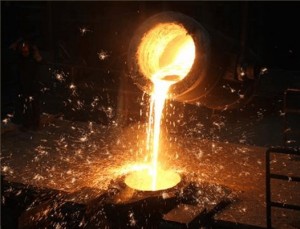From Casting Rolls to Industrial Casting (Part 2): Defect Control & Industry Application

Building on Part 1, this section focuses on industrial casting’s "defect-free" baseline (using rolls as a benchmark), extends to steel/auto applications, and concludes with core laws.
I. Defect Control: A Full-Process System
Casting rolls (critical to rolling line stability) cannot tolerate defects like bonding-layer slag or cracks. Their prevention system is an industrial template, forming a three-tier loop:
1. Source Prevention (Rolls as Benchmark)
Defects are blocked at melting, with strict roll production standards:
Add specialized slag removers to high-chromium cast iron to avoid bonding-layer slag (causes cracking).
Inert gas reduces hydrogen content, preventing high-temperature pore expansion.
Maintain appropriate melting temperature—too high burns key elements (reduces strength); too low limits fluidity (causes incomplete filling).
Industry adaptations:
Automotive: Gray cast iron cylinder blocks use cost-effective slag removers to ensure water jacket sealing.
Aerospace: Turbine blade superalloys use vacuum degassing to prevent high-temperature defect expansion.
Common principle: All castings follow slag removal + temperature control + composition stabilization, adjusted for failure risk.
2. Process Monitoring (Rolls as Reference)
Pouring and cooling directly affect quality, with precise roll controls:
Regulate pouring speed to avoid sand inclusion (too fast) or incomplete filling (too slow).
Slow-cool rolls in pits (duration based on size) to eliminate thermal stress and prevent radial cracks.
Industry adaptations:
Automotive die casting: NEV motor housings use high-speed pouring (fills thin walls fast) and accelerated cooling (boosts efficiency).
Aerospace: Turbine blades use directional solidification (aligns grains with stress) for high-temperature fatigue resistance.
Common principle: All processes balance filling integrity + stress control—rolls prioritize "defect-free," auto prioritizes "efficiency," aerospace prioritizes "performance."
3. Post-Production Inspection (Rolls as Foundation)
Defects are detected pre-deployment, with roll inspection setting baselines:
Ultrasonic testing rejects large shrinkage pores (weaken roll structure).
Magnetic particle testing bans visible cracks (propagate under rolling stress).
Industry adaptations:
Automotive safety parts: Chassis control arms require full surface testing (strict crack limits for stability).
Nuclear power: Pressure vessels use high-precision testing (no linear defects to avoid radioactive leaks).
Common principle: Inspection strictness ties to failure consequences—rolls (medium risk) set a baseline; higher-risk parts use stricter standards.
II. Industry Application: Extending Roll Logic
The material-molding-defect logic of rolls adapts to core industries:
1. Steel Industry (Heavy-Duty Wear Parts)
Continuous casting molds: Copper-based alloys (chromium/zirconium) are cast into thin walls, with heat treatment to boost hardness (mirroring roll heat treatment).
Blast furnace liners: High-aluminum cast iron uses centrifugal casting (dense structure) and slow cooling (stress elimination)—reusing roll logic.
2. Automotive Industry (Mass-Produced Lightweight Parts)
Process adaptation: Die casting replaces sand casting for auto gearboxes (automated mass production).
Quality control: Full inspection for safety parts (e.g., control arms), sampling for non-safety parts (e.g., motor end caps) to cut costs.
Material balance: Gray cast iron (cylinder blocks) balances strength and machinability at lower cost vs. rolls’ "performance-first" high-chromium iron.
III. Universal Laws of Industrial Casting
Casting rolls embody three unchanging laws:
Materials align with needs: No blind selection—rolls use chromium for wear, blades use heat-stable alloys, NEVs use aluminum for lightness.
Processes fit scenarios: No "one-size-fits-all"—complex rolls use sand casting, mass auto parts use die casting, precision blades use investment casting.
Full-process defect control: Defects are prevented at source, monitored in process, and inspected post-production—no "after-the-fact fixes."
Conclusion
Casting rolls are a "microcosm of industrial casting," connecting high-temperature steel parts, mass auto parts, and precision aerospace components. Their adaptability to extreme environments, production scales, and performance needs confirms casting’s irreplaceable role as an industrial cornerstone.
Post time: Oct-15-2025